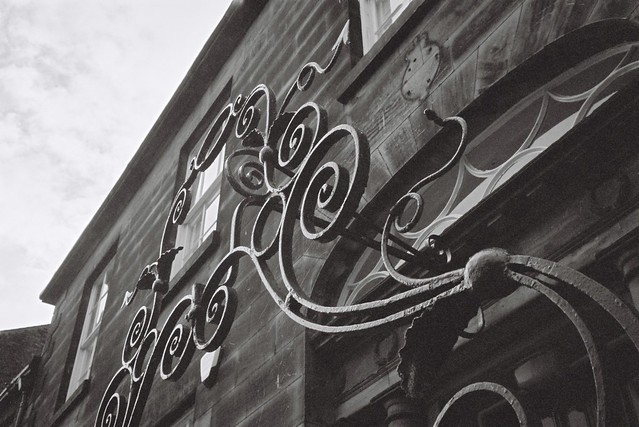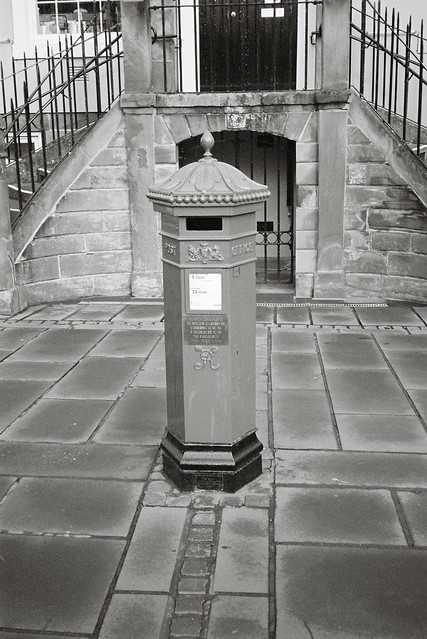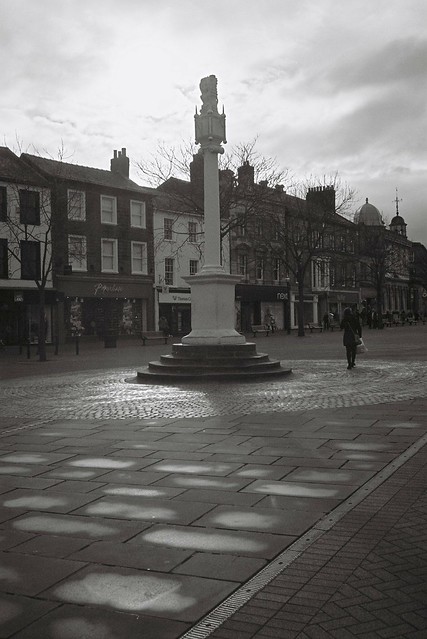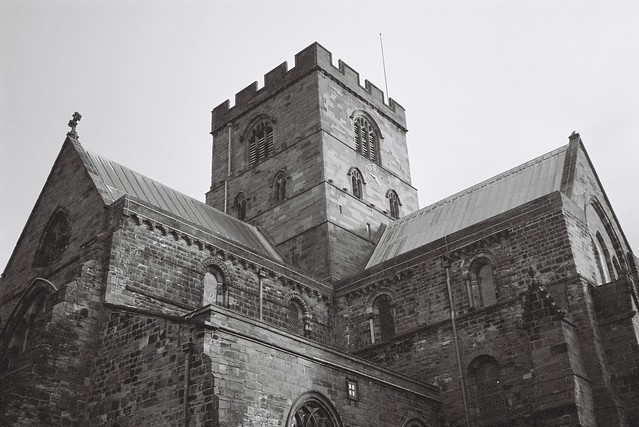If you’ve followed my blog you’ll have seen me mention this Ground breaking but now relatively obscure 70’s compact.

The reason why this compact is so important is obvious by the name. This was the world’s first commercially produced Auto focus camera.
By the mid 70’s Konica had established a knack of making classic 35mm compacts. The key model was the C35 rangefinder which is still is used as a benchmark to compare other compact rangefinder. They also produced the C35 EF in 1975, much beloved by Andy Warhol and the first compact camera with built-in electronic flash. The AF arrived 2 years later but is a much more revolutionary camera but is stylistically similar to the EF.

Konica C35 AF Specs
- Lens: Hexanon 38mm
- Focus: Passive AF
- Focal Range: 1.1m to ∞
- Metering: CdS
- Exposure: Auto
- Aperture: f/2.8- 22
- Shutter: 1/60, 1/125 & 1/250
- EV (100ISO) : 9-17
- Filter: 46mm
- Batteries: 2xAA
- Flash: GN14 (m)
To compare the camera to AF compacts made a decade or more later is unfair due to technological advances and the fact that Konica made it was ground breaking. Even more so is the fact it uses a Passive AF system.
Before discussing how the C35 AF system works. It is probably helpful to discuss Active AF systems first. These arrived with the Canon Canon Sure Shot/AF35M 18 months later and have become the dominant AF system and still are used on most digital point and shoots today. In essence use a principle similar to radar or sonar. A beam of usually infra-red light or ultrasound is emitted from the camera and the time it takes to bounce back is used to determine the focus.

The C35 AF uses the Honeywell Visitronic AF system that essentially works like an automated rangefinder working on the contrast differences between the 2 detector windows. This is frankly a mind blowing achievement by mid 70’s technology and much harder than active AF to create. The actual mechanical focusing is also a product of its day – no servo motor here to move the lens. When you wind on the lens is moved outwards. When you hit the shutter button it is pulled backwards until the AF system determines it is in right position and locks it & opens the shutter.

Exposure wise things are handled by a CdS metering system. The camera has a fast f/2.8 4 element lens and has a wider shutter speed range than the C35 EF but it is a fully automated system with no user control other than to turn on the manually triggered flash. A single LED in the viewfinder warns you of low light and there are no meter readings to give you a sense of exposure. The viewfinder features frame lines and parallax error marks. Typical for the time but unusual in later AF compacts is the ability to use traditional filters and the inclusion of a cable point.

This is true point and shoot stuff. There are no user controls beyond the film speed setting dial, shutter button and winder lever. You can’t exposure or focus lock with this system. You aim on the square central in the viewfinder and depress the shutter. There is a few hundred milliseconds of a clockwork noise whilst the lens moves back and shutter fires. The only feedback is the needle meter on the front of the camera which shows you the rough focal distance after the shot. There is no focus check LED nor an option to lock (half depressing the shutter just activates the low light system. Unlike later AF compacts you have none of the options to adjust for backlight etc (you can use the film speed dial though).

I had my suspicion about how accurate it was but was pleasantly surprised. I ran a roll of recently expired BW400CN thru on Saturday morning in Carlisle. The bulk of the 27 shots were in focus – few a bit soft but some almost as sharp that I get with my C35 rangefinder. I deliberately didn’t shoot easy but actually not bad and certainly no worse than a fixed focal length 90’s AF (actually probably better than many). Best in short to median range. Exposure was fine – the fast lens coped with most shots and as the lane shot above illustrates can cope with a challenge.
Mines came with original box as good as new with the specialist cap (covers detectors too) and case. The seals are going as you would expect for a 39-year-old camera
In essence for its day a – technological breakthrough. It now looks a bit clunky and certainly offers less practicality than a later AF compacts in terms of speed, AF confirmation and lock but you have a camera with more retro charms and the ability to stick filters on.
And oh Passive AF remain the choice for many high-end dSLR…
What I paid & What it sells at
- £12.30 + postage for near mint with box and all original gear including case and manuals
- Often sells for £20-30 inc postage for working models
- Can get lucky for less. Make sure get lens cap
- It’s near identical successor the AF2 not quite as iconic but cheaper
Why buy
- A Classic and game changer
- Konica Hexanon lens
- A AF compact that takes filters
Why Not
- Slow to shoot
- Fire and forget – no option to check
- Limited options
- You need to turn on the flash (a plus if you ask me)
- You can get a Pentax Espio for a fraction of the cost
Alternatives
- Pentax Espio AF Zoom – consummate AF camera from the 90s
- BelOMO Elikon Autofocus- Soviet Hommage/copy of the C35 AF
- Canon Sure Shot/AF35M – 1979 First Active AF compact
- Halina MW35E – Zone focus but oddly able period flash compact
Helpful links
- Konica C35 AF manual & others at Kyphoto.com (read the page)
- Konica C35 AF at Camera-wiki.org
- Konica C35 AF Review on Photo.net
- Konica C35 AF2 Review on Shoot Film Co
- Konica Film Cameras Group at Flickr

I’ve just started shooting film and asked my Dad about the old family camera… turns out it was a Konica c35 AF! He’s now given it to me to look after. Looking forward to giving it a go. Thanks for the write up, an interesting read.
Hi Dan,
Thanks for all the reviews, it really helps as well as being truly interesting to read! I’m looking for a point and shoot compact for travelling (light, with flash and quite easy/quick to use), I was going for this one then I read you review about the Pentax Espio. Are they really alike? The pictures on your review for the Espio look so so sharp (too sharp for me ;)), are they always like this or is it just this particular roll? Any insight/recommendation will be hugely appreciated, have a beautiful day. Léa
Camera is generally pretty good ~ one of the most consistent performers for a zoom compact I’ve ever seen. That said you do get some user related duff shots and sometimes things are not as quite as sharp as you’d like but still acceptable. That said it was no worse than the working Olympic mju-1 I had.
Hi, I just got one myself but I think it is broken. If I point the camera directly at a bright lamp should the LED light still turn on after half-pressing it? I set the camera speed to 400 then to 25 but the LED light still turns on. Cheers!